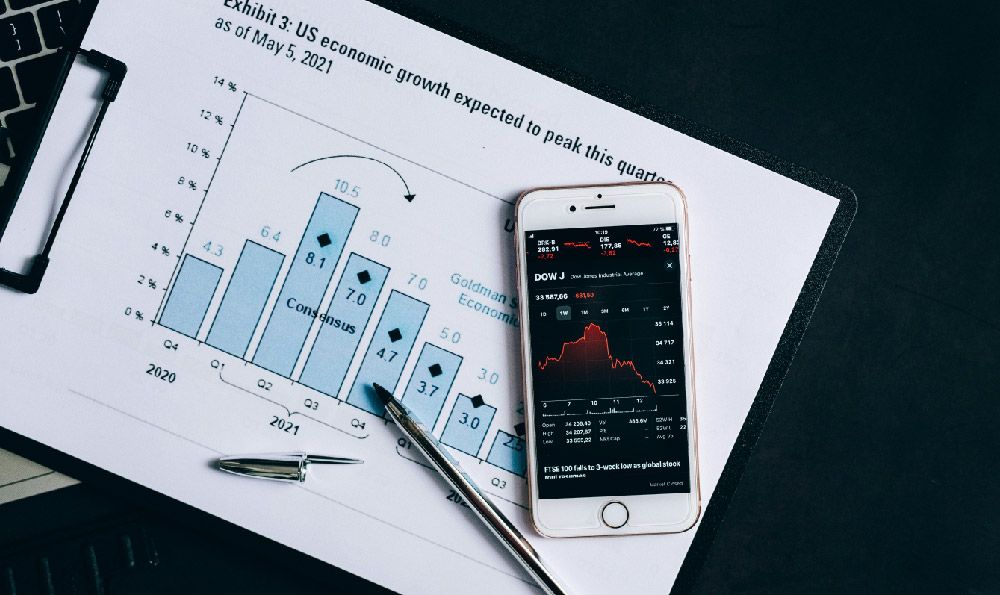
Investing for quick returns is a siren song that has lured many an investor onto the rocks. The promise of rapid wealth accumulation is inherently appealing, but the reality is often far more complex and fraught with risk. While achieving substantial returns in a short timeframe isn't entirely impossible, it demands a nuanced understanding of the market, a disciplined approach, and a significant tolerance for potential losses.
The allure of quick returns stems from the human desire for instant gratification. We live in a world where information flows instantaneously, and expectations are set accordingly. The thought of patiently building wealth over decades can feel tedious and uninspiring compared to the prospect of doubling your investment in a year. However, this mindset can be incredibly dangerous, leading to impulsive decisions and a willingness to take on excessive risk in pursuit of unrealistic goals.
Before even considering investments geared towards quick returns, it's crucial to establish a solid financial foundation. This includes having a fully funded emergency fund (typically 3-6 months of living expenses), paying down high-interest debt, and having a clear understanding of your risk tolerance. Diving into speculative investments without these safeguards is akin to building a house on sand. A sudden market downturn or unexpected expense can quickly wipe out any gains and leave you in a far worse financial position than before.

Once a strong foundation is in place, exploring options for potentially faster returns can be more strategically approached. One common avenue is investing in growth stocks. These are companies that are expected to grow at a rate significantly above the average for the market. They often reinvest their earnings back into the business to fuel further expansion, rather than paying out dividends. While growth stocks can offer significant upside potential, they are also inherently more volatile than established blue-chip companies. Their valuations are often based on future projections, which can be highly sensitive to changes in market conditions, industry trends, and company-specific news. Thorough due diligence is paramount when selecting growth stocks, involving a deep dive into the company's financials, management team, competitive landscape, and growth prospects.
Another area that frequently attracts investors seeking quick returns is the options market. Options contracts give the holder the right, but not the obligation, to buy or sell an underlying asset at a specific price on or before a certain date. Options can be used to leverage investments, allowing you to control a larger position with a smaller amount of capital. This leverage magnifies both potential gains and potential losses. While options can be powerful tools for sophisticated investors, they are notoriously complex and risky. The value of an option can decay rapidly, and it's possible to lose your entire investment if the underlying asset doesn't move in the anticipated direction within the specified timeframe. Therefore, a comprehensive understanding of options pricing, trading strategies, and risk management techniques is essential before venturing into this arena.
Cryptocurrencies are another investment class that has gained immense popularity in recent years, often touted for their potential for rapid gains. The cryptocurrency market is characterized by extreme volatility and speculative trading. While some cryptocurrencies have delivered astronomical returns in a short period, many others have crashed and burned, leaving investors with substantial losses. The underlying technology behind cryptocurrencies is still relatively new, and the regulatory landscape is constantly evolving. Investing in cryptocurrencies requires a high degree of risk tolerance and a willingness to accept the possibility of significant losses. It's also crucial to be aware of the potential for scams and fraudulent schemes within the cryptocurrency ecosystem.
Beyond specific asset classes, active trading strategies can also be employed in an attempt to generate quick returns. Day trading, swing trading, and other short-term trading approaches involve making frequent trades based on technical analysis, market sentiment, and economic news. These strategies require significant time commitment, discipline, and a deep understanding of market dynamics. Active traders often use leverage to amplify their returns, which can also magnify their losses. It's important to recognize that active trading is a zero-sum game; for every winner, there is a loser. Most amateur traders lack the skills and resources necessary to consistently outperform the market, and many end up losing money in the long run.
Regardless of the specific investment approach chosen, several key principles should be adhered to when pursuing quick returns. Firstly, diversification is crucial to mitigate risk. Don't put all your eggs in one basket. Spread your investments across different asset classes, sectors, and geographic regions. Secondly, manage your risk by setting stop-loss orders to limit potential losses. This helps prevent emotional decision-making and protects your capital from catastrophic events. Thirdly, be realistic about your expectations. Quick returns are not guaranteed, and it's important to have a backup plan in case your investments don't perform as expected. Finally, continuously educate yourself about the market and the specific investments you are considering. Knowledge is your best defense against making costly mistakes.
In conclusion, while achieving quick returns in investing is possible, it requires a carefully considered approach and a realistic understanding of the associated risks. It's essential to establish a solid financial foundation, thoroughly research potential investments, manage risk effectively, and avoid emotional decision-making. Remember that investing is a marathon, not a sprint, and that building wealth over the long term is often the most reliable path to financial security. Instead of solely focusing on quick returns, prioritize building a well-diversified portfolio that aligns with your risk tolerance and long-term financial goals. A balanced approach, combining both growth and value investments, can provide a more sustainable and less stressful path to achieving your financial objectives.





